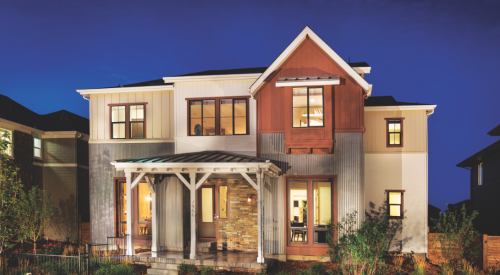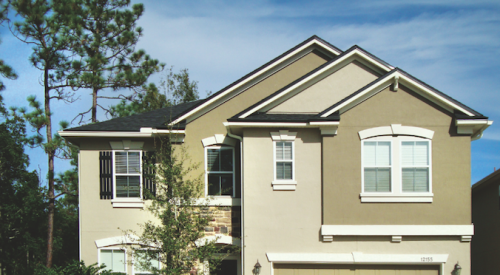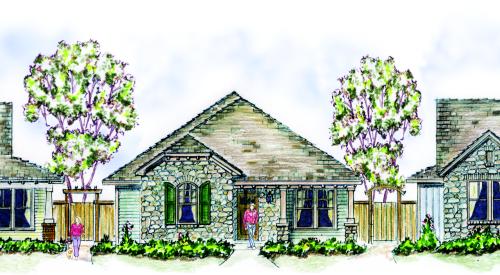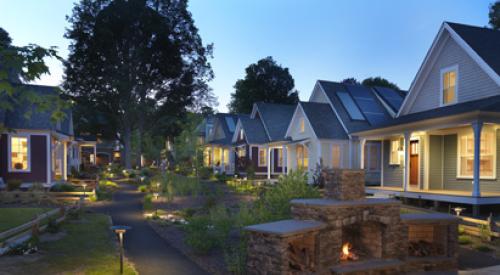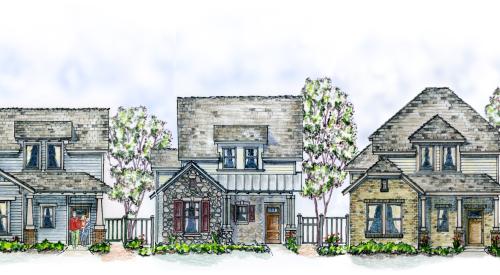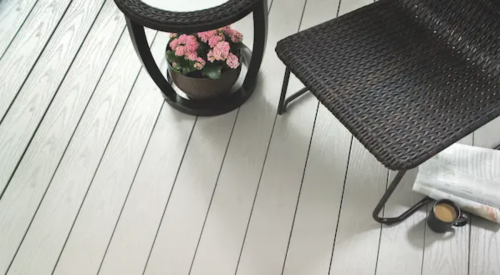 |
Subtly colored masonry cement, combined with weathered brick, results in a warm, informal look. |
 |
Extruded mortar produces a rustic hand-crafted look to brick walls. |
 |
Classic Williamsburg-style Colonial features slate roof, molded bricks and traditional mortar detailing. |
 |
Recessed mortar complements Georgian architectural details such as divided lights and cornices. |
 |
Simply by changing the color of the masonry cement, builders can create homes that are subtly different from their neighbors and add variety to neighborhoods. |
 |
Oversized window frames combine with glazed brick and matched masonry cement to produce a fresh take on a classic look. |
 |
White-on-white combination is ideal for French Provincial and southwestern architectural styles. |
 |
Different combinations of masonry cement and brick create variety in the streetscape. |
Brick remains a favorite building material for many home builders and home buyers. Surveys from the National Association of Home Builders show that 60 percent of American home buyers prefer brick homes. When asked, buyers also say they prefer variety in their neighborhoods. Yet the larger the development, the harder a builder must work to differentiate one home from another — not to mention the new homes another developer might be putting up a few blocks away.
Faced with this dilemma, there are two choices:
Does mortar really make a difference? Yes. Colored masonry and varied finishing techniques are cost-effective ways to give homes an upscale look and add architectural variety, without scaring off conservative buyers. The difference is often enough to tip the scales toward a sale, especially in competitive markets.
Debbie Naftel, sales manager at John Wieland Homes and Neighborhoods in Atlanta often talks to prospects that have driven through one of her communities and a competitor's. "They know there's something different about the two," she says, "but they haven't a clue as to what the difference is."
The difference is various shades of colored masonry. "We strive to have variety in our communities," Naftel said. "We vary the brick and the color of the masonry from house to house. It makes our streetscapes more compelling."
In the hands of a custom home builder, colored masonry helps create the exact effect the buyer wants. It's also used effectively to unify outdoor architectural elements, such as walls, patios and fountains.
Keith Rogers, a builder of custom homes in the Winston-Salem, N. C. area, says that colored masonry gives him the ability to change the appearance and feeling of brick. He notes that by combining brick and colored masonry he can essentially create new brick colors. "On the homes I build, the mortar is only about 15 percent of the total area on a brick facade, but it can totally change the hue of the brick and give a different look."
Rogers uses colored masonry to achieve the overall aesthetic feel, making sure that the bricks, mortar and other exterior elements work together. "For most of my customers, and for myself, the brick and colored masonry selection drive the other exterior color selections on the home," he explains. This includes the choice of color for roofing materials, trim, doors and other painted surfaces.
Like Wieland, Rogers uses colored masonry to differentiate one house from another. "I can use the same brick in two houses right across the street from one another, and people never recognize that it's the same brick because of the differences in mortar." When building a home that features exterior brick elements — walls, fountains and patios — Rogers chooses the same masonry color and same brick used in the house's facade to create the feeling that the courtyard is an extension of the house. "The patios and walls give a real inside/outside orientation and the colored mortar really makes a difference," he says.
For custom builder Bryan Elliot, in Kernersville, N.C., colored masonry helps create a monolithic look as well as a high-contrast look. "When I'm looking for a monolithic look, I'll use one of the taupe colors for the mortar, and get a brick to match," he says, "because you don't see the mortar joints. It's a nice, clean look." Elliot also uses colored masonry to help coordinate other elements in the house, such as the roofing, the shutters, the trim, and any rock work.
"Color coordination is imperative," he says, "and the colored mortar gives me versatility when I'm trying to pull a particular color or style out of the house." Elliot builds old-world style houses and uses various techniques to achieve that look.
Colored mortar impacts more than just the visual. Elliot changes the type of joint he uses, because the mortar joint can seem to change the color of the brick and alter the total effect. "For some homes, I use a flush joint on the brick with the colored masonry. It wipes the mortar up onto the brick so in the end you see more of the colored masonry than the brick," he says.
Regina Sandlin, head of trend research and new product development at Signature Homes, a community home builder based in Birmingham, Ala., uses colored masonry as a sales tool, allowing buyers to define the home's look and get more personally involved in the finished home. For example, she gives home buyers a choice of brick color and masonry color, as well as a choice of masonry joint, either a weeping joint or a full mortar smear.
"We always try to get the look that people are drawn to when they see very expensive homes. We achieve an upscale look in our price point by using the colored mortars," she says. In some Signature Homes' communities, the home buyer has a limited choice of brick colors and a wider choice of colored mortars. This helps the builder achieve economies of scale in their brick purchases and rely on the colored masonry to create variety within the development.
Gary Milla, Director of Specialty Products for Lafarge North America Inc., contributed his design expertise and experience to this article.
LEARN MORE ABOUT IT More resources on this topic can be found at The Brick Industry web site, www.bia.org
